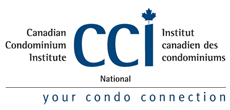Part 39 published on 01/08/12
Condominium Corporation improperly (albeit briefly) denied owners’ rights of access.
The Corporation’s by-laws stated that non-resident owners were not entitled to use the common elements and facilities except for the purpose of visiting their units and dealing with management. The rules also required residents to complete a “Resident Information Form” (with accompanying proof of identification) confirming their residency in a unit.
Unit 3411 was owned by Sarah Computer Consulting Inc. In relation to that unit, four FOBs and clickers had been issued to:
Malcolm Gonsalves and his wife;
Mr. Gonsalves’ daughter, Sarah; and
Sarah’s boyfriend.
On January 26, 2010, the Condominium Corporation learned that Mr. Gonsalves was seeking to make use of the squash court. The Corporation had no Resident Information Form or proof of identification for Mr. Gonsalves or his wife. The Corporation believed, based upon its records, that only Sarah and her boyfriend were residents of the unit. Therefore, on January 27, 2010, without notice, the Corporation deactivated the FOBs and clickers of Mr. Gonsalves and his wife. (The Corporation later explained that this was done because it was “the fastest way of getting somebody from a unit to meet with management or security to get any access concerns corrected”.)
The next day, on January 28, 2010, Mr. Gonsalves attended the building and discovered that his FOBs and clickers had been deactivated. Mr. Gonsalves went to the security desk upset and “threatening a variety of inappropriate actions”. Mr. Gonsalves was then asked to complete a Resident Information Form, and provide proof of identification (which he refused). Even so, all FOBs and clickers were immediately reactivated (not including access to the recreational facilities).
Despite further requests from the Condominium Corporation, Mr. Gonsalves still refused to provide proof of identification. [He only did so once the Court proceedings were commenced in June, 2011, whereupon his access to the recreational facilities was reinstated.]
The owner applied for a Declaration that the Condominium Corporation’s actions were oppressive, and seeking compensation under s. 135 of the Condominium Act, 1998, reimbursement of common expenses, general damages for discrimination, a declaration that the directors had not acted honestly and in good faith, and a declaration that the Corporation’s rule requiring that residents sign a Resident Information form was void and unenforceable.
The Court said that the Corporation’s one-day deactivation of the FOBs and clickers, without notice to the owner, was oppressive. However, the Court only awarded the owner the sum of $500 “being nominal damages in the circumstances”.
The Court said:
The inability of Mr. Gonsalves to access the recreational facilities after January 28, 2010 was entirely of his own doing. He could have easily completed the form on January 28, 2010. He could later have easily provided a copy of his ID showing the building as his address. Instead, Mr. Gonsalves chose to threaten lawsuits, retain counsel and commence this application. To now complain that he didn’t have access to the recreational facilities from January 28, 2010 until June 2011 appears to be his choice and not because of the actions of PCC #421.
The Court said that the Condominium Corporation’s rule was fair and reasonable. It was “necessary to protect the residents and owners from unauthorized use of the building and its amenities”. Furthermore, it was understandable, in this case, that the Condominium Corporation did not require all units to have a completed Resident Information Form (with accompanying identification). The Court said:
In my view, it is not unreasonable that PCC #421 does not necessarily enforce the completion of the Resident Information Form from all units. It would have been preferable. But it is clear that PCC #421’s management only requests completion of the form with identification if an issue arises. It is important to keep in mind that compliance, when requested by management, is very easily complied with. It takes a matter of moments to complete the form. All the resident has to do is provide a copy an ID showing his address as the building. As a result, I conclude the manner in which PCC #421 operates or requires completion of its Resident Information Forms is reasonable in the circumstances.
